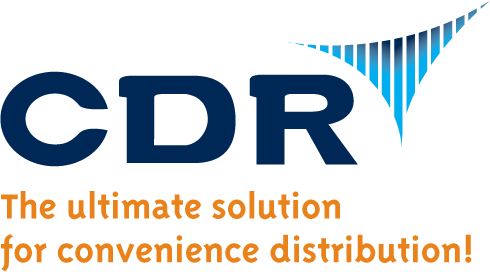Curious about how to ensure a smooth ERP system rollout? Discover the best training tips to help your team succeed.
After investing in a powerful ERP system, your goal is to see improved efficiency and better decision-making across the board. For convenience store distributors, where managing inventory, tracking orders, and optimizing delivery routes are key, an ERP system can transform operations.
However, without proper training, even the most advanced ERP system can fall flat. Employees may struggle to adopt it, leading to frustration and inefficiencies. To prevent this, effective ERP system training is crucial.
This guide will walk you through best practices for ERP training, from creating a tailored training plan to overcoming common challenges. By following these strategies, you’ll ensure a smooth implementation and maximize the return on your ERP investment.
Understanding Your Team’s Training Needs
Every member of your organization has a unique role to play in using your new ERP system, and their training needs are just as unique. This is especially true in the c-store distribution sector, where your team includes everyone from sales reps managing store accounts to warehouse staff handling stock replenishments. Understanding these differences is crucial to developing an effective training plan that avoids overwhelming anyone and ensures every department is fully prepared.
- Identify Role-Specific Needs: Not everyone interacts with an ERP system in the same way. For example, while your sales team might focus on order processing and customer interactions, your warehouse staff will be more concerned with inventory management, stock turns, and timely order fulfillment. Customizing training for each role ensures that each team member can learn the parts of the ERP system that are most relevant to them,
- Evaluate Skill Levels: Some employees might be familiar with ERP systems, while others may be encountering this technology for the first time. Understanding where your team stands allows you to avoid overwhelming them and focus on what matters most.

Creating a Practical ERP System Training Plan
To ensure a smooth implementation, outline a training plan that covers who needs what type of training and when it should be provided. This plan will help your employees get up to speed with the ERP system quickly to avoid disruptions to your business.
- Break Training into Phases: Start with introductory training on system basics, then gradually move to advanced features. For example, begin with order processing before moving on to delivery route optimization.
- Assign Role-Based Training: Each team should receive training on the specific tasks they handle daily. For instance, warehouse personnel will benefit from learning about stock replenishment and order processing, while the finance team will focus on invoicing and reporting.
- Provide Ongoing Support: After the initial training, schedule follow-up sessions to ensure employees can ask questions as they begin using the system. Continuous support keeps your team on track.
Effective Training Practices for ERP Success
To maximize the effectiveness of your ERP system training, using diverse methods can make learning both engaging and practical for your team. Different roles benefit from different learning styles and formats, and training that aligns with how employees work will make them more confident in applying their new skills.
- Role-Specific Training: Each department should focus on the ERP features most relevant to their responsibilities. For example, warehouse staff will benefit from training focused on managing inventory and coordinating deliveries, while sales teams may need to concentrate on order processing and customer relationship tools.
- Hands-On Learning: Practical exercises are one of the most effective ways to ensure employees are comfortable with new processes. This could include simulations for tasks like inventory adjustments or generating reports, allowing team members to apply what they learn immediately in real-world scenarios.
- Offer Multiple Formats: Some employees may prefer visual learning through video tutorials, while others might benefit from in-person sessions or printed guides. Offering a range of formats caters to different learning styles and helps make training more accessible and effective.

Empowering Leaders as ERP Champions
Selecting team leaders as ERP champions helps build a support network within your organization. These champions play an essential role in fostering system adoption, offering guidance, and encouraging their peers. Having a peer point of contact can reduce hesitation and help employees feel supported throughout the training process.
- Choose Leaders from Different Departments: Select supervisors or managers from key areas like warehouse operations, sales, and logistics. These champions should receive extra training and act as points of contact for their teams.
- Peer-to-Peer Training: Champions can support training by answering questions and demonstrating ERP processes. Employees often feel more comfortable seeking help from a peer, which can reduce the stress and uncertainty that come with learning new technology.
- Recognize and Reward Champions: Acknowledge the contributions of your ERP champions through public recognition or incentives. Doing so motivates champions and encourages others to become more involved in the training process.
Leveraging Vendor and In-House Training Resources
Vendor-provided resources combined with custom, in-house training materials give employees a full toolkit for learning. Vendors offer foundational knowledge, while customized materials show employees how ERP processes integrate with your specific workflows.
- Use Vendor Resources: Leverage tutorials, webinars, and manuals to provide employees with a broad understanding of the system’s core features. This basic knowledge can be reinforced with hands-on examples specific to your business operations.
- Customize In-House Training: Tailor resources to align with your business processes. For example, provide step-by-step instructions on tasks unique to your organization, such as restocking based on real-time data or managing regional distribution schedules.
- Encourage Peer Learning: As mentioned, experienced employees are valuable resources. Encourage knowledgeable team members to share tips, lead informal workshops, or offer one-on-one mentoring sessions to help reinforce training and answer specific questions as they arise.
Measuring Training Success
To ensure your training is successful, tracking key metrics provides insights into both user adoption and training effectiveness. These metrics can highlight areas where employees are excelling or might need additional support.
- User Adoption Rates: Monitor how frequently employees are using the system and whether they’re leveraging key features like inventory tracking and order management. High usage rates indicate successful engagement, while low usage may highlight areas needing improvement.
- Workflow Efficiency: A well-trained team will work more efficiently with the ERP system. Evaluate metrics like error rates, processing times, and turnaround to see if the ERP system is streamlining workflows and reducing bottlenecks.
- Employee Feedback: Surveys and feedback sessions provide insight into employees’ experiences. Understanding their perspective on training helps you fine-tune the approach and adjust resources to meet their needs.

Overcoming Common Training Challenges
Training challenges are common, but with a proactive approach, you can make the transition smoother for everyone involved.
- Employee Resistance to Change: Change can be intimidating. Proactively communicate the ERP system’s benefits, like making day-to-day tasks simpler and freeing up time for other responsibilities. Employees are more likely to engage if they understand the positives from the outset.
- Time Constraints: Employees have limited time for training. Short, focused training sessions, or microlearning, allow employees to absorb information in manageable chunks, making it easier to fit into their schedules.
- Varying IT Skills: Employees with little technical experience may need extra support. Offer simplified materials, such as quick-reference guides, and encourage questions. Providing a safe space for asking questions helps reduce anxiety.
- Knowledge Retention: Information is often forgotten without practice. Follow-up sessions, quick quizzes, and regular refreshers help reinforce key points and ensure employees retain the knowledge they need.
CDR Software’s DAC ERP: Built for Convenience Distribution
DAC ERP by CDR Software is designed to tackle the distinct needs of convenience store distributors, streamlining everything from inventory control to delivery route optimization. With intuitive, role-based workflows, DAC ERP equips each department to operate smoothly and make data-driven decisions with ease.
To ensure successful adoption, CDR Software provides role-specific training and ongoing support resources, empowering your team to make the most of DAC ERP from day one. Discover how a solution built specifically for convenience distribution can transform your operations.
Conclusion: Ensuring Long-Term ERP Success Through Training
Effective ERP training is not a one-time event—it’s an ongoing journey that requires planning, support, and continuous learning. By understanding your team’s needs, creating a comprehensive training plan, leveraging both vendor and in-house resources, empowering team leaders, and proactively addressing common challenges, you set your team up for long-term success.
Remember, the ultimate goal of ERP training is to empower your employees to feel confident in using the system, leading to increased efficiency, better decision-making, and a stronger bottom line for your organization. If you’re ready to take your ERP training to the next level, reach out to CDR Software for personalized support and resources that will help you every step of the way.
Ready to Maximize Your ERP Success?
Ensure your team is fully prepared to make the most of your ERP investment. Discover how CDR Software’s tailored ERP solutions and comprehensive training can help your business thrive from day one. Contact us today to learn more or request a demo.
FAQs
Why is ERP system training important for business success?
ERP training is crucial because it ensures employees understand the system, reducing errors, increasing efficiency, and maximizing software utilization.
How long does ERP training usually take for a business?
ERP training duration depends on system complexity and team size, typically starting with foundational sessions and progressing to advanced role-specific training.
What are the common challenges in ERP training?
Common challenges include employee resistance to change, varying IT skill levels, and limited training time. Addressing these challenges with clear communication, role-specific support, and continuous learning can enhance training success.
What resources are essential for effective ERP system training?
Effective ERP training requires a mix of vendor-provided materials (like tutorials and manuals) and customized in-house training that aligns with specific business workflows.
How can I measure the success of ERP system training?
Measure ERP training success by tracking user adoption rates, improvements in workflow efficiency, and collecting employee feedback to identify areas for improvement.

